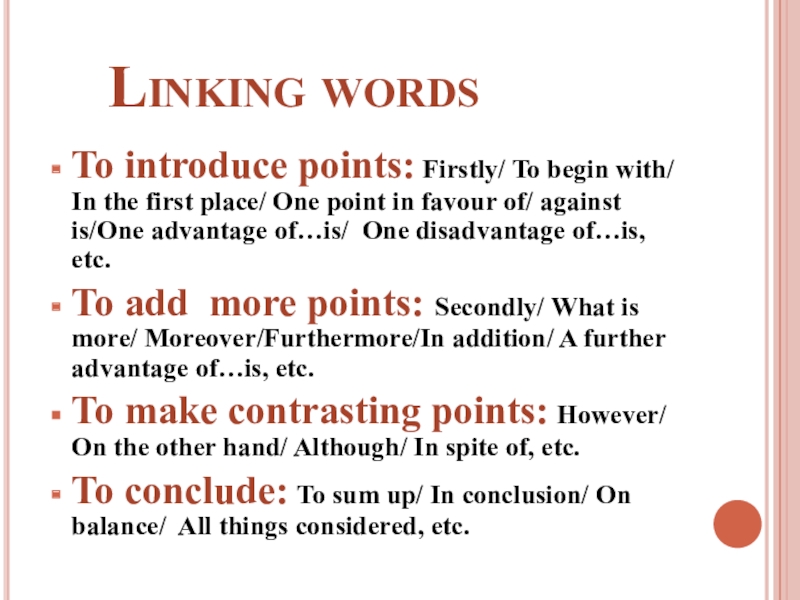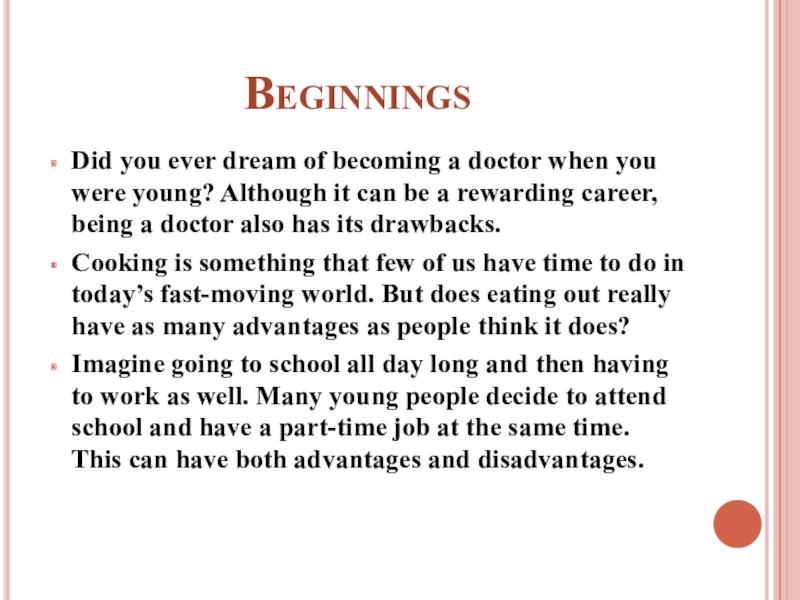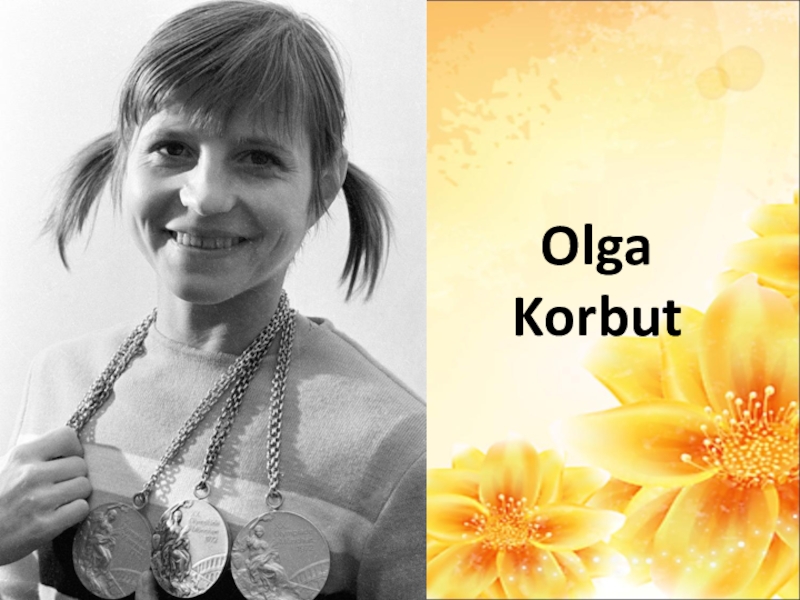- Главная
- Разное
- Образование
- Спорт
- Естествознание
- Природоведение
- Религиоведение
- Французский язык
- Черчение
- Английский язык
- Астрономия
- Алгебра
- Биология
- География
- Геометрия
- Детские презентации
- Информатика
- История
- Литература
- Математика
- Музыка
- МХК
- Немецкий язык
- ОБЖ
- Обществознание
- Окружающий мир
- Педагогика
- Русский язык
- Технология
- Физика
- Философия
- Химия
- Шаблоны, фоны, картинки для презентаций
- Экология
- Экономика
Презентация, доклад по английскому языку Teaching Writing
Содержание
- 1. Презентация по английскому языку Teaching Writing
- 2. Writing is a conversation between readers and writers
- 3. For and against compositionIntroduction Paragraph 1 (State
- 4. Linking wordsTo introduce points: Firstly/
- 5. Слайд 5
- 6. Points to rememberBrainstorm
- 7. CheckingHave you
- 8. First Paragraph Techniques In the first
- 9. Слайд 9
- 10. Last Paragraph Techniques In the last
- 11. Слайд 11
- 12. Expressing Opinion
- 13. Linking
- 14. Слайд 14
- 15. Points to rememberMake
- 16. Слайд 16
- 17. Introduction
- 18. Слайд 18
- 19. Слайд 19
- 20. Which
- 21. Beginning
- 22. Paragraph Plan
- 23. Informal Letter1.2.3.4.5.6.7.8.
- 24. Слайд 24
- 25. Useful phrasesgreetingsasking
- 26. Useful phrasesmaking suggestionsclosing
- 27. Formal Letter1.2.3.4.5.6.7.8.9.10.
- 28. Formal LetterYour address The
- 29. Letter of Applicationgreetingreason for writingyour
- 30. Letter of ApplicationCVclosing expressions
- 31. Reviews
- 32. Useful Language
- 33. Points to rememberOrganize your
- 34. Detective Story IntroductionParagraph
- 35. Слайд 35
- 36. Слайд 36
Слайд 3For and against composition
Introduction
Paragraph 1 (State the topic)
Main Body
Paragraph 3 (Arguments against)
Conclusion
Final paragraph (Balanced consideration/opinion)
Слайд 4 Linking words
To introduce points: Firstly/ To begin with/ In
To add more points: Secondly/ What is more/ Moreover/Furthermore/In addition/ A further advantage of…is, etc.
To make contrasting points: However/ On the other hand/ Although/ In spite of, etc.
To conclude: To sum up/ In conclusion/ On balance/ All things considered, etc.
Слайд 5 Style
In a
write I think, I feel, etc., but to say what you think in a more impersonal way. Study these examples.
It can be argued that… (impersonal it + the passive)
Some people argue that… (impersonal some people)
It is also obvious that… (it + adjective)
It is undoubtedly true that…(undoubtedly for emphasis)
Слайд 6 Points to remember
Brainstorm and write as many
Put your best points together in two groups so that you can organize them into paragraphs.
Never write an argument for or against a topic without supporting it with justification.
Write in a semi-formal or formal style.
Do not use short forms or strong personal expressions.
The use of linking words is absolutely necessary when writing an argumentative composition.
Слайд 7 Checking
Have you put the paragraphs in
Have you written in an appropriate style?
Have you used suitable linking words to introduce your points for and against and your conclusion?
Have you checked grammar, spelling and punctuation?
Слайд 8First Paragraph Techniques
In the first paragraph you can state
making reference to an unusual scene or situation e.g. The sight of a huge lion dozing in the corner of a cage with no interest in its surroundings…
addressing the reader directly e.g. Have you ever wondered if animals in captivity are happy?
starting with a rhetorical question e.g. Are there really more advantages than disadvantages to keeping animals in zoos.
Слайд 9 Beginnings
Did you ever
Cooking is something that few of us have time to do in today’s fast-moving world. But does eating out really have as many advantages as people think it does?
Imagine going to school all day long and then having to work as well. Many young people decide to attend school and have a part-time job at the same time. This can have both advantages and disadvantages.
Слайд 10Last Paragraph Techniques
In the last paragraph you can give
summarising the topic under question, e.g. To sum up, keeping animals in captivity can be cruel and unnatural, but it is also necessary.
ending with a rhetorical question, e.g. Would it be better to watch various species gradually becoming extinct?
giving the reader something to consider, e.g. If it were not for zoos, many people would never have the chance to see a live wild animal.
Слайд 11 Endings
It is
On balance, the life of a doctor can be both exciting and demanding. Not everyone is suited for it especially as it is not a profession with room for mistakes.
All in all, while eating out does have its advantages, it is not something we should make a habit of. Perhaps we should all try to make time in our life to eat properly.
Слайд 12 Expressing Opinion
Composition
Paragraph
Paragraph 2 (Express your opinion and give 2-3 reasons for it ).
Paragraph 3 (Express an opposing opinion and give 1-2 reasons for this opposing opinion).
Paragraph 4 (Explain why you don’t agree with the opposing opinion).
Paragraph 5 (Make a conclusion restating your position).
Слайд 13 Linking Words
To list viewpoints: Firstly/
To add viewpoints: both…and/ What is more/ not only…but also/ In addition/ Furthermore/ Besides/ not to mention the fact that, etc.
To present the other side of the argument: Contrary to what most people believe/ As opposed to the above ideas/ Some people argue that, etc.
To express opinion: I believe/ In my opinion/ I think/ In my view/ I strongly believe/ I feel that/ It seems to me that, etc.
Слайд 14 Style
Compositions expressing opinions are formal in style. Unlike for/against argumentative essays, this type of topic asks for your own opinion, which should be clearly stated and supported by reasons. A good argumentative composition expressing your opinion should consist of :
a) an introduction in which the title is explained and your opinion is clearly stated,
b) a main body which consists of 3 paragraphs. Each viewpoint, supported by a logical reason, should be presented in a separate paragraph. The opposing viewpoint is mentioned in a new paragraph.
c) a conclusion in which you sum up your viewpoints and restate your opinion.
Слайд 15 Points to remember
Make notes for and against
Provide good arguments for both sides of the issue, even if you strongly agree with one side.
Each viewpoint should be joined to the others with linking or sequence words e.g. in the first place, to start with, what is more, also, apart from this, it is argued, etc.
Do not use contractions, write in a formal style.
Never start writing your composition before making a plan.
Слайд 16 Checking
Have you put
Have you written in an appropriate style?
Have you expressed your opinion?
Have you linked all viewpoints with sequence words?
Have you supported each viewpoint by a reason?
Have you checked grammar, spelling and punctuation?
Слайд 17 Introduction
The introduction could be
sentence 1 – a general statement to introduce the topic which the essay is going to deal with;
sentence 2 – paraphrase the question;
sentence 3 – give your opinion.
Слайд 18 Introduction
Reorder this introduction:
Essay 1
I strongly disagree with this opinion for several reasons.
Not everyone is sure that it is worth keeping such languages alive.
There are many different languages in Russia: a region such as Dagestan has as many as a hundred.
Слайд 19 Conclusion
The
use a phrase at the beginning to tell the reader this is the end (In conclusion, To conclude, To sum up, In summary )
restate your opinion and summarize the main points, including the opposing opinion
relate back to the original question
Слайд 20 Which one is best?
a For
b To sum up, I believe that there is nothing harmful in traditional toys like guns. As argued, children need to play and it is untrue that there is some kind of link with aggressiveness.
a And my final point is that presents do not make children happy. It is wrong to claim that parents show their love with toys like guns and soldiers so this makes them acceptable.
Слайд 21 Beginning
Вecoming a vegetarian is a choice that many people are making after recent health scares. The question is, does being a vegetarian have a positive or a negative effect on one’s health. I believe that it can do more harm than good.
In conclusion, I feel that vegetarians could suffer from health problems if they do not have a healthy, nutritious diet. However, everyone must decide for themselves which lifestyle choice suits them best.
Слайд 22 Paragraph Plan for Letters
Introduction: Paragraph 1 reason(s )for writing
Main Body: Paragraphs 2,3 development of the subject
Conclusion: Final Paragraph closing remarks
Слайд 24 Informal Letter
Your address
Salutation (e.g. Dear Sally, Dear Aunt Jane)
A possible and common beginning
The date below the address
e.g. Thanks for… I was awfully glad to… etc.
e.g. I must apologize for not writing… etc.
The body of the letter
A common ending
Looking forward to seeing you. I’ll write you soon.
Hope to hear from you soon.
The close
e.g. Lots of love, Best wishes, Yours.
Signature
Слайд 25 Useful phrases
greetings
asking about them
referring to their
giving news
Dear + first name
Hi! How are things? How is it going? How are you?
Great news about… Glad to hear about… Sorry to hear about…
You’ll never believe what..
Oh, and another thing. Listen, did I tell you about?
Слайд 26 Useful phrases
making suggestions
closing expressions
signing off
name
Why don’t you…?
We’ll got to go now. Give my love to…See you soon! Looking forward to
hearing from you.
Love, Lots of love, Yours, Best wishes.
Your first name
Слайд 28 Formal Letter
Your address
The date
The name and address
Salutation (e.g. Dear Sir, Dear Madam, Dear Sir/Madam)
Introduction (e.g. I am writing to reply to your advertisement. With reference to your advertisement in…for…)
Explain why you are writing (e.g. I wish to gain experience of… I feel I could be useful to you as…)
Give further details
Make some reference to hearing from the addressee
e.g. I look forward to hearing from you.
The close (e.g. Yours faithfully – where the salutation is Dear Sir/Madam
Yours sincerely – where the salutation is Dear Mr.Brown)
The signature
Слайд 29 Letter of Application
greeting
reason for writing
your experience
name unknown: Dear Sir/Madam
name
I am writing to apply for the post/position of… as advertised in…
I gained some experience while… My qualifications include…
Слайд 30 Letter of Application
CV
closing expressions
signing off
name
Please find
Please do not hesitate to contact me if/should you require further information.
Yours sincerely, Yours faithfully
Your first name+surname
Слайд 31 Reviews
Introduction
Paragraph1
background (setting, type of
main characters)
Main Body
Paragraph 2 Paragraph 3
main points of the plot general comments
Conclusion
Paragraph 4
recommendation
Слайд 32 Useful Language for Writing
Background: This well-written/informative/fascinating book…, The film/story is set in…,The film/book tells the story of…, this work is based on…, The film stars …as…, etc.
Main points of the plot: The plot focuses on…, The story begins…, The plot has an unexpected twist…, The film reaches a dramatic climax…, etc.
General comments: It is rather long /confusing/slow etc, The cast is excellent/weak…, It is really imaginative/full of suspense/ thought-provoking…,The script is dull/clever…,It has a tragic/surprising end…, The characters are very life-like/not very convincing…, I found the ending a bit boring/predictable/disappointing…,etc.
Recommendations: I strongly recommend…,Don’t miss it…, It is well worth seeing…, I wouldn’t recommend it because…, etc.
Слайд 33 Points to remember
Organize your review logically in paragraphs.
Use
Use link words to make your review coherent.
Use the present simple to describe the plot.
Make some personal recommendations.
Слайд 34 Detective Story
Introduction
Paragraph 1
Set
Main Body
Paragraphs 2-4
Development (describe the crime, the procedure for investigating,
what the suspects were doing when the crime happened, keep the reader in suspense )
Conclusion
Final Paragraph
End the story ( refer to consequences)
Слайд 35 Checking
As you
described the weather and the time of year.
described the place and important objects.
built up characters sufficiently.
used adjectives and adverbs to give more details.
created atmosphere.
provided clues for readers.
provided a title.
Слайд 36
1. Вербицкая М.В., Махмурян К.С. Английский язык. ЕГЭ-2016. Методические рекомендации по оцениванию выполнения заданий ЕГЭ с развернутым ответом. Раздел Письмо
2. Учебное пособие для подготовки к ЕГЭ по английскому языку: Чтение и письмо. Вербицкая М.В., Малколм Манн, Стив Тейлор-Ноулз 2010г., Macmillan
3.Russian State Exam. Хотунцева Е.А. РЕЛОД Москва,2015
4. Enterprise Intermediate V.Evans, J.Dooley Express Publishing 1997









































